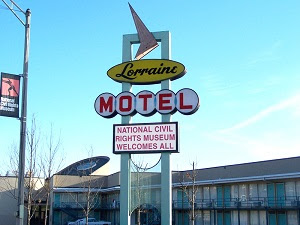Derbies Diversity Sluggers Bourbon Food Historic Architecture
and Parks
Louisville is centrally located along the Ohio River and is one America’s
most accessible cities within a day’s drive of more than half the nation’s
population.
History
this city has a colorful past, from its frontier founding at the time of
the American Revolution, to early 19th century steamboats and as a
Union base during the Civil War. Named for King Louis XVI of France in appreciation
for his assistance during the Revolutionary War, Louisville was founded by
George Rogers Clark in 1778 becoming Kentucky’s largest city by 1830. Strategically
located at the Falls of the Ohio,
Louisville was a major commercial center with river transportation supplemented
by the Louisville & Nashville Railroad, chartered in 1850 and operating 1,800
miles by 1920.
A City of Firsts Louisville was first in the nation to introduce the secret ballot and adopt zoning and planning measures to control and shape urban growth, the first bridge designed exclusively for motor vehicles to cross the Ohio River, and birthplace of Mary Millicent Miller, the first woman in the United States to receive a steamboat master's license. Famous citizens include President Zachary Taylor, two U.S. Supreme Court Justices, naturalist John James Audubon and boxing legend Muhammad Ali.
A City of Firsts Louisville was first in the nation to introduce the secret ballot and adopt zoning and planning measures to control and shape urban growth, the first bridge designed exclusively for motor vehicles to cross the Ohio River, and birthplace of Mary Millicent Miller, the first woman in the United States to receive a steamboat master's license. Famous citizens include President Zachary Taylor, two U.S. Supreme Court Justices, naturalist John James Audubon and boxing legend Muhammad Ali.
Neighborhoods
Louisville’s earliest neighborhoods were incorporated river towns each with
its own strong sense of neighborhood identity. The area saw an influx of German
and Irish immigrants and, with the advent of streetcars, suburban growth.
1890-1930 streetcars marked the era of the beginning of the city’s suburbs
combining rural ambiance with urban amenities.
Historic Architecture and Parks the local landscape includes six tree-lined parkways, 18 parks and more than 30 miles of bike lanes. Louisville’s large landscaped parks are connected by tree-lined parkways, smaller parks, playgrounds, and squares; historic treasures and valuable community assets.
Bourbon and Food Louisville is home to over 2500 restaurants that blend traditional Kentucky cooking with International cuisine including French, Italian, and Mediterranean fare, Mexican and American Southwest influences, and classic Barbecue.
Diversity
as a center of culture and transport, Louisville is a multicultural city with
cosmopolitan roots stretching back centuries. From the African American
experience that predates the history of the United States to the arrival of
Asian and Jewish communities in the early Twentieth Century, to the most recent
immigration of Hispanic and Latino communities, Louisville’s unique character
continues to be remade by each influx of new people.
Arts and
Culture diverse arts and culture communities make the city come alive
with creative energy, new ideas, and talent. As a city built on America’s first
frontier, Louisville is home to a proud tradition of artisanal crafts including
glass and ceramic arts, wood and metal work, and decorative domestic crafting
with an original Louisville twist as well as home to more than a dozen venues
and performance companies and the music traditions of blues, bluegrass, and
rock & roll.
Where the US South and Midwest Meet the World
The Kentucky Derby Museum on the front steps of historic
Churchill Downs, captures the pride, tradition and excitement of the greatest two minutes in sports. Main
Street Museum Row is ten original attractions within four walkable blocks: Frazier
History Museum, Glassworks, Louisville Slugger Museum & Factory, Kentucky
Science Center, the Kentucky Museum of Art & Craft, 21c Museum Hotel, the
Muhammad Ali Center and the Evan Williams Bourbon Experience. The Belle of
Louisville is the oldest Mississippi-style steamboat still in operation in the
world; this National Historic Landmark has three decks and can carry over 600 passengers.



















